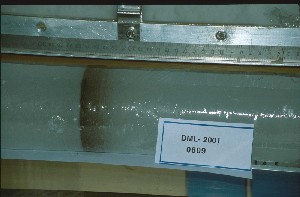
> ENC Master > Climate Encyclopaedia > People changing climate > more > 1. Man-made climate change? > - Changes in climate
|
|
 |
How are
people changing
the climate?
Read more |
1. Man-made climate change?
Observed changes in
the Earth’s climate
The 1990s appear to be the warmest decade and 1998 the warmest year since 1860. And over the last 1000 years, it was probably the 1900s that had the greatest temperature increase in the Northern Hemisphere (we know less about the Southern Hemisphere). |
Weather
- Average global temperatures on both land and the ocean surface have increased by 0.6°C. The temperatures have increased more over land areas than over the oceans.
- The differences between day and night temperatures have decreased because night temperatures have increased more than day temperatures.
|
- The number of hot days has increased.
- The number of cold days with frost has decreased.
- The average rainfall in the Northern Hemisphere increased by 5–10% throughout the 1900s. Some areas, such as the Mediterranean region and the northern and western regions of Africa, have gotten less rain, while other areas have gotten more.
|
 |
|
- The number of events of extreme rainfall at mid- and high-latitudes (high latitudes mean close to the North or South poles) has increased.
- Areas in Asia and Africa have experienced more frequent and more intense dry periods during some summer months.
Other physical conditions
|
 |
 |
|
2. TRACES OF THE PAST: By drilling deep into mountain glaciers and the ice caps on Antarctica and Greenland, scientists can analyze old ice to find out about the climate in the past. The ice core on the picture contains dust from a volcanic eruption, carried by the wind from far away. Photo: Marzena Kaczmarska/NPI (click to enlarge, 21 kB)
|
|
 |
The sea level increased by 1–2 mm per year during the 1900s.
The period when ice covers lakes and rivers became on average two weeks shorter during the 1900s.
Glaciers outside the polar regions have receded.
Permafrost (ground or bedrock that is always frozen) in polar and mountain regions has thawed.
|
|
El Niño is a weather phenomenon in the Pacific Ocean that appears regularly, about every five years around Christmas time (which is why it is called “El Niño”, which means “Baby Jesus”). El Niño has always affected the climate in large areas of the planet and led to drought and catastrophic flooding. Scientists believe that global warming can make El Niño more intense and occur more often. This trend has been visible for the last 20–30 years.
|
|
Author: Camilla Schreiner - CICERO (Center for International Climate and Environmental Research - Oslo) - Norway. Scientific reviewers: Andreas Tjernshaugen - CICERO (Center for International Climate and Environmental Research - Oslo) - Norway - 2004-01-20 and Knut Alfsen - Statistics Norway - Norway - 2003-09-12. Educational reviewer: Nina Arnesen - Marienlyst school in Oslo - Norway - 2004-03-10. Last update: 2004-03-27.
|
 > ENC Master > Climate Encyclopaedia > People changing climate > more > 1. Man-made climate change? > - Changes in climate
> ENC Master > Climate Encyclopaedia > People changing climate > more > 1. Man-made climate change? > - Changes in climate

